The world of mobile apps is ever so thriving you might think just having a download should drive success, but unfortunately now it’s far from enough.
But while an app download is significant, it amounts to nothing if users do not actually engage with the installed app.
User engagement is the heartbeat of App Store Optimization (ASO) strategies; delight your users post-installation to maintain growth, increase visibility, and keep a healthy long-term relationship.
Well, what is user interaction in terms of ASO and why should you care?
The following article will break down the various facets that user interaction plays in ASO and provide some valuable insights into ways you can improve engagement and performance of your app.
- How Users Interact in ASO Strategy
- Building A Successful Onboarding Platform
- Improving User Interaction with In-App Features
- Tactics to Promote Repeat User Interaction Through ASO
- How To Measure And Improve User Interaction: ASO Tools
- ASO Strategies for Maximizing User Interaction
- User Interaction in ASO – FAQs
How Users Interact in ASO Strategy
What is user interaction: User interaction includes every way a user engages with your app post downloading it.
This includes anything from time spent using the app to an internal action within it such as making in-app purchasesTransactions made by users within an app to access additional content or features., leaving reviews, or even browsing across different sections.
User engagement is not just a metric in the world of ASO, but it is also a crucial factor whose importance to an app’s success cannot be overstated.

Visual representation of user engagement in ASO, illustrating the importance of analyzing user behavior to optimize app performance.
Understanding User Engagement in ASO
User interaction, as far as ASO is concerned, means the actions that users take within your app.
These interactions signal to the app store algorithms that your app is interesting to users, which boosts its ranking.
But which interactions are the most meaningful?
Consider how users move through your app, use it daily or weekly, and engage with the content you provide.
In turn, each of these interactions contributes to the performance of your app as a whole.
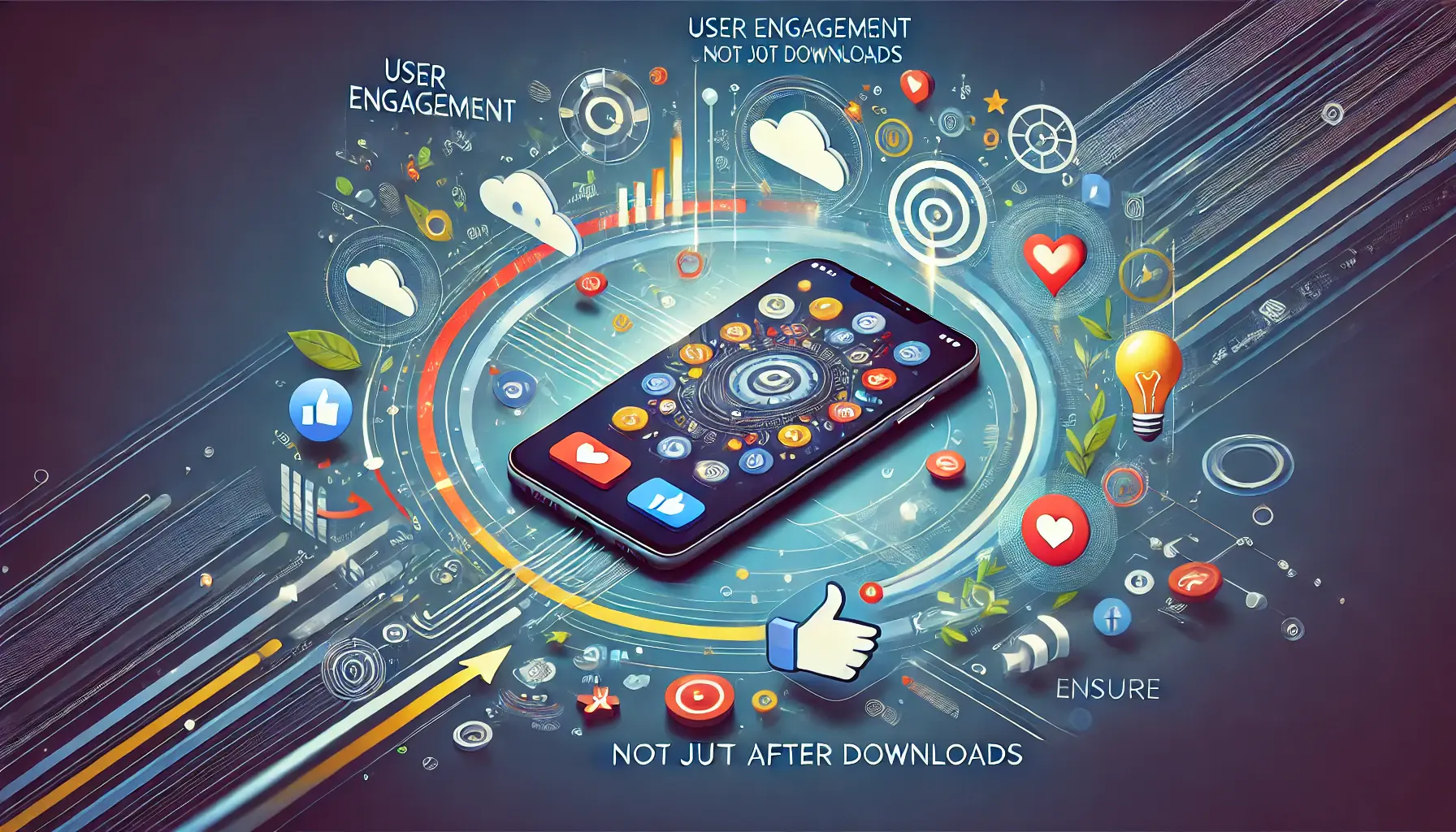
Illustration of user engagement extending beyond downloads, highlighting the importance of ongoing interactions within the app.
User Engagement Not Just After Downloads
Before talking about the next point of focus, let me just reinforce that downloads don’t inherently produce high user interaction, so converting those into long-term users will be an important part for app developers to work on.
Sure, having a high number of downloads right away will temporarily improve your app’s rankings, but if users launch it once and don’t engage with the app again (for whatever reason), that download is not very valuable.
When users are interacting with your app, it means that your app is alive and well, so user interaction is essential for the health of your ASO strategy!

Visualization of measuring user engagement through analytical tools and metrics, highlighting the importance of tracking app performance.
User Engagement — How to Measure
As with any app, measuring user engagement is the key to knowing how well your app performs.
Focus on key metrics such as:
- Daily Active Users (DAU): The number of different users engaging with your app each day.
- Session Duration: The amount of time users spend in your app per session.
- Retention Rate: The percentage of users who continue to use your app over a specific period.
- In-App Purchases: Transactions made by customers on your application, indicating deeper engagement.
By keeping an eye on these metrics, you can see how engaging your app is for users and determine where improvements need to be made.

Illustration of the importance of app user feedback in ASO, highlighting how reviews and ratings impact app visibility and performance.
The Significance of App User Feedback on ASO
Product ratings and reviews help strengthen your presence in ASO.
Higher positive feedback will lift your app, while negative feedback shows where you need to grow.
By proactively asking users to write reviews and responding to feedback, you can get them more engaged, showing that they are important for your app and that their opinion matters.
Ultimate Guide to App OnboardingThe process of guiding users through the initial setup or use of an app to ensure they understand its features and benefits.: Tips & Tricks for Smooth User Interaction
The all the way user-interaction journey starts when your app opens for the first time by a user.
First impressions, or onboarding, are incredibly powerful: they determine the patterns people use to interact with your app over time.
An optimized onboarding process can significantly contribute to making a user interact more with the app, as it reminds them of the benefits they will enjoy when using your application and motivates them to explore its features.
In this article, we are going to take a closer look at improving onboarding in your app and increasing user engagement as a result.
User interaction includes every way a user engages with your app post downloading it. Understanding this is crucial for optimizing your app’s performance in ASO.

Illustration of a successful onboarding platform, highlighting the importance of a smooth and welcoming process to engage users from the start.
Building A Successful Onboarding Platform
Onboarding is not just about presenting a welcome screen; it’s about introducing the core features and benefits of using the app.
Develop an uncomplicated onboarding process.
Users should have a clear grasp of what your app does and how to use it.
Do not inundate users with lots of information upfront—separate the onboarding into smaller steps that focus mainly on how users can perform key functions using your app.
We want them to feel comfortable and confident that they can use our app from day one.

Illustration of the role of tutorials in improving user retention, highlighting the importance of guided learning and support within an app.
Using Tutorials to Improve User Retention
In apps where the features are more complex, tutorials can be a really powerful tool to use in onboarding.
Implement interactive tutorials for your app’s features.
One good way to boost user retentionThe ability to keep users engaged and active in using the app over a period of time. and reduce the learning curve is through using these tutorials.
They need to be engaging and offer tangible value, thus encouraging the user to explore other parts of your app.
Use a combination of text, images, and dynamic interaction to make content lessons attractive and information-rich.

Illustration of the impact of onboarding on user engagement, highlighting the positive outcomes of a well-executed onboarding process.
What Onboarding Did to User Engagement
Successful onboarding equals more user interaction.
If a user knows where to navigate and understands the benefits, it will take them less time to become engaged, thus they are more likely to return to use your app again.
Poor onboarding, conversely, can lead to frustration and user attrition.
First impressions always count—if your app is hard to use the first time, users might not give it a second chance.
This is why it’s critical to optimize onboarding so that users experience strong user interaction from the beginning.

Illustration of dynamic onboarding strategies, emphasizing the importance of customization and adaptability in App Store Optimization.
Dynamic Onboarding Strategies for ASO
If you want to maximize onboarding for ASO, here are the top tips:
- Keep it short and simple: When a user is onboarding, they should be able to finish it in minutes.
- Highlight top features: Emphasize the primary attributes that help your app stand out from others.
- Customize the experience: Adjust onboarding to fit individual user preferences whenever possible.
- Offer skip options: More experienced users might prefer to explore the app on their own without being guided through onboarding.
- Gather feedback: Collect feedback on how users felt about their onboarding experience through in-app surveys or feedback prompts.
Adhering to these best practices will help you craft an onboarding experience that not only educates users about your app but also maximizes the likelihood of them becoming active long-term users—setting the stage for a successful ASO strategy.
Onboarding is not just about presenting a welcome screen; it’s about introducing the core features and benefits of using the app. A well-structured onboarding can lead to better user interaction.

Illustration of enhancing user interaction through in-app features, highlighting the role of interactive elements in boosting user engagement.
Improving User Interaction with In-App Features
If the user successfully onboards, the next step is action—how you keep them engaged with your app’s features.
The functionality you provide for in-app users is far more than just tools; they are opportunities for driving user interaction, promoting frequent use, and building loyalty.
With interventions like top in-app features designed to interact with users, you can keep user interaction ongoing and the experience fresh as your ASO strategy evolves.

Illustration of how gamification can increase user engagement, highlighting the role of rewards and competition in motivating users.
Using Gamification to Increase User Engagement
Another powerful method is gamificationThe use of game-like elements in non-game contexts to increase user engagement. for increasing user interaction within your app.
You can gamify the app experience with rewards, points, leaderboards, and challenges.
Gamification leverages our innate need for competition and achievement, further drawing users to spend more time on the app and explore other features.
When implemented correctly, gamification can transform casual users into very active participants in your app’s community, significantly boosting user interaction.

Illustration of re-engaging users with push notifications, highlighting the effectiveness of timely reminders in bringing users back to an app.
Re-Engaging Users with Push Notifications
Push notifications provide a direct means to reach users and engage them with your app, even when they are not actively using it.
You can bring lapsed users back into the app by sending timely and relevant notifications, using this as an opportunity for them to view new content, complete a task in-app, or take advantage of a special offer.
However, it is crucial to ensure that the frequency of notifications is well-calibrated, as sending too many can lead to user annoyance and disengagement.
Personalizing notifications based on user activity and interests is key to making them feel relevant and valuable, enhancing overall user interaction.

Illustration of driving user interaction through personalization, highlighting the effectiveness of customized content and tailored experiences in engaging users.
Tactics for Driving User Interaction Through Personalization
Personalization is a key method to increase user engagement and interaction.
Users are more likely to use an app regularly if they feel that it is personalized for them.
This can include personalized content recommendations, tailored deals, or even enabling customization options within the app.
When the app delivers an experience that is more tailored to each individual user, they are much more likely to return and engage with the app consistently.
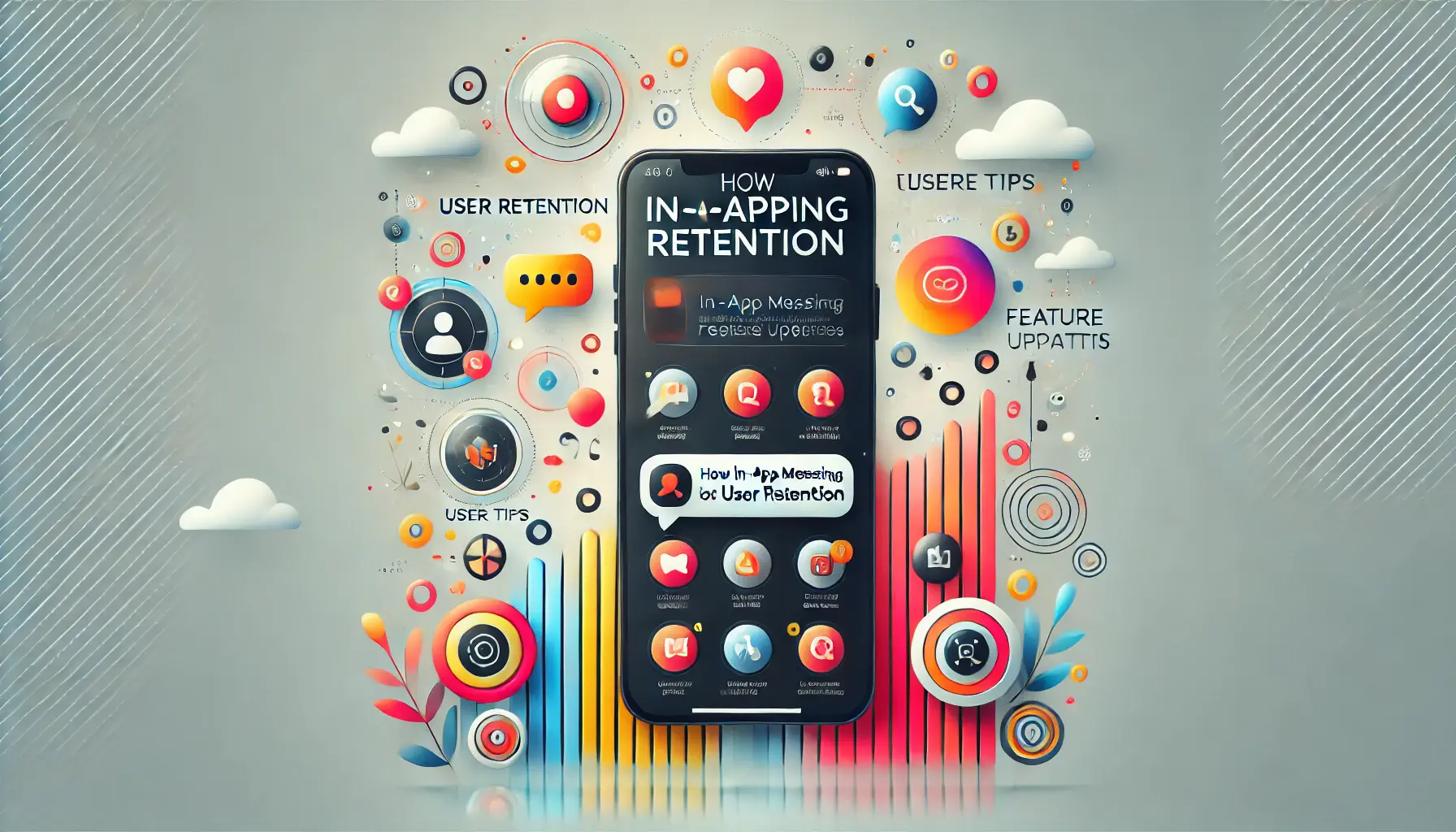
Illustration of the impact of in-app messaging on user retention, highlighting the role of communication and support in keeping users engaged.
How In-App Messaging Affects User Retention
In-app messaging is an excellent medium for communicating with users while they are actively using the app.
Whether it’s providing support, offering advice, or promoting new features, in-app messages can educate users about different aspects of the app, helping to increase user interaction and retention.
Contextual messages that are relevant to the user’s current activity within the app are particularly effective.
When done correctly, in-app messaging can significantly boost user retention by ensuring that users feel supported and well-informed throughout their journey with your app.
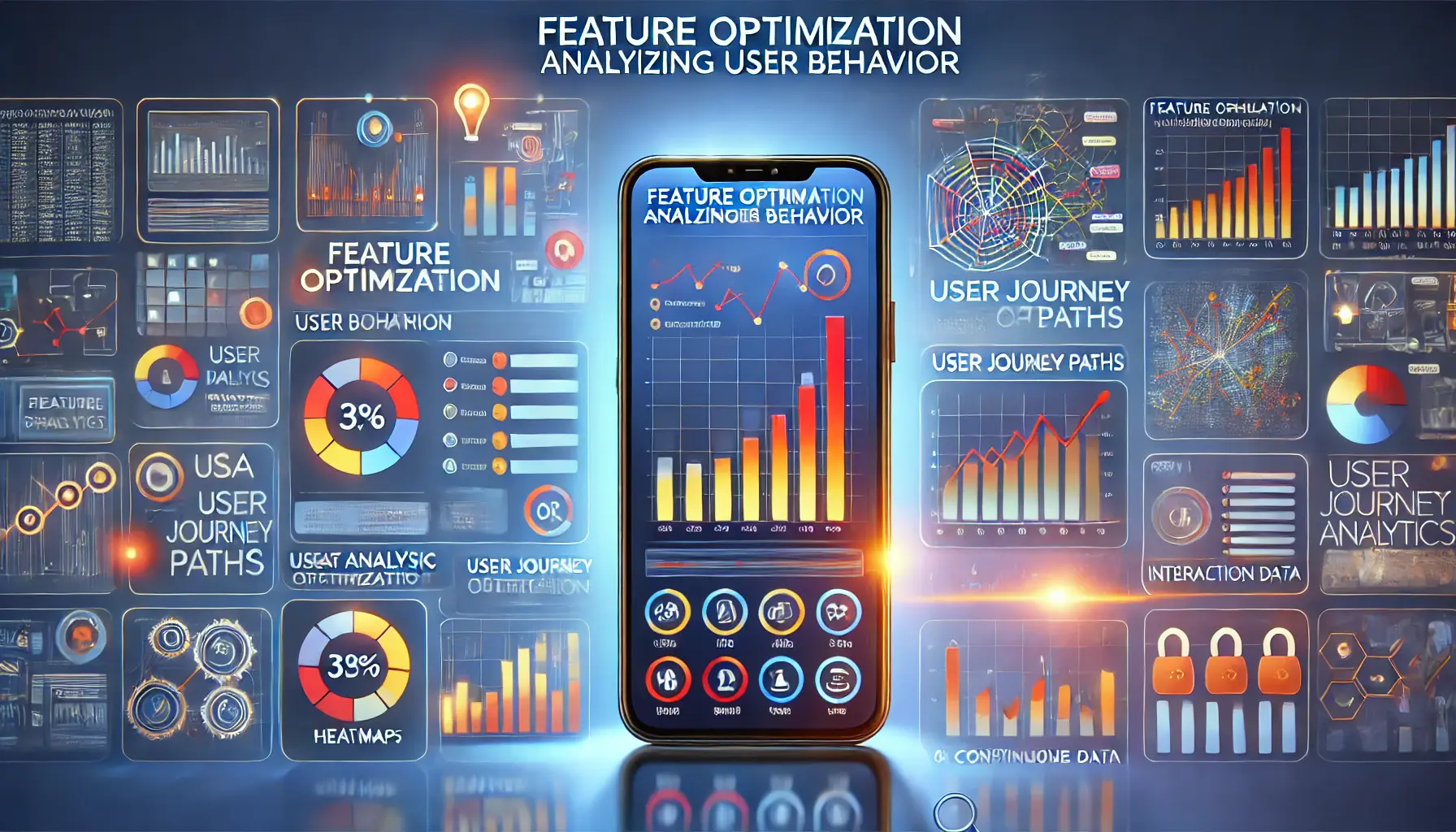
Illustration of the role of user behavior analysis in feature optimization, highlighting the importance of data-driven decisions in improving app features.
Feature Optimization: Analyzing User Behavior
Understanding how users engage with different aspects of your app is essential for continuous optimization.
By analyzing user interaction data, you can identify which features are most used, which are underutilized, and where users encounter difficulties.
This knowledge allows you to make informed decisions regarding feature updates, improvements, and new developments.
Continuous refinement of your app’s features, driven by key performance indicators (KPIs) around user interaction data, ensures that your app remains relevant, engaging, and aligned with user needs while providing value at the right times.
In-app features are more than just tools; they are opportunities for driving user interaction, promoting frequent use, and building loyalty.

Illustration of strategies to promote repeat user interaction through ASO, highlighting the role of loyalty programs and personalized content in encouraging ongoing engagement.
Tactics to Promote Repeat User Interaction Through ASO
Beautiful in-app features are not enough to maintain user interaction with your app for the long run—you must use creative App Store Optimization (ASO) strategies that drive users back into interacting more frequently.
Their impact kicks in when you use ASO techniques for getting them discovered and keep other users around by building a loop that attracts new ones.
In this blog, we are going to discuss some proven ASO tricks that can boost your chances of getting constant user interaction.

Illustration of designing app updates that re-engage users, highlighting the importance of thoughtfully crafted updates in bringing users back to the app.
How to Design App Updates That Re-Engage Users
Keeping your app fresh and relevant requires frequent updates.
However, updates are not just about bug fixes or new features—they need to be focused on user re-engagement.
- How to re-engage: Add fresh content, new seasonal themes, or unique features that get users coming back.
- Use in-app notifications to remind your users of the new value and experiences that await them.

Illustration of using seasonal and thematic promotions in ASO, highlighting the effectiveness of leveraging seasonal events to boost app engagement.
Seasonal and Thematic Promotions with ASO
Supporting seasonal and thematic promotions with user-responsive behavior is key.
Users are more prone to using your app if its content or features reflect current events, holidays, or even trending topics that they may be following on social media.
Leverage your app store presence by announcing these updates and include seasonal keywords and themed visuals in-app screenshots, videos, and descriptions for those sweet seasonal installs.
This enhances the appearance of your app and brings it closer to being part of the news cycle, so that users might often remember or return!

Illustration of integrating user reviews into social interactions, highlighting the impact of user feedback on enhancing community engagement in mobile apps.
Incorporating User Reviews Into Social Interactions
User reviews are a goldmine for ongoing user interaction.
You show that you care about what your users have to say by proactively inviting more feedback and responding in kind, ultimately leading to greater stickiness.
What’s more, good reviews can be used as social proof for bringing in new users and re-engaging existing ones.
Prompt users for feedback and make it as frictionless as possible at important moments within the app, like right after a user accomplishes an action or experiences a new feature.

Illustration of engagement-focused ASO strategies, highlighting the importance of long-term user engagement for sustainable growth.
Engagement-Focused ASO Strategies for Sustainable Growth
A long-term approach should focus on keeping your users engaged, and thus it should be a key ASO strategy.
This means continuously tweaking your app store presence with updated keywords, a new design, and user-generated content.
Consider creating a content calendar that aligns with the milestones where your app will release updates, and how you know users engage.
In conclusion, pay attention to app store optimization tactics by inspecting your app performance metrics and taking actions based on user behavior trends.

Illustration of monitoring and investigating user interaction patterns, highlighting the importance of analyzing user behavior for app optimization.
Monitor and Investigate User Interaction Patterns
Keep tabs on user interaction trends—continuous engagement of users is key.
By following how clients utilize the application over time, you can unmistakably figure out what is working and where your users are getting stuck.
Track metrics such as session length, retention rates, and conversion rates using in-app analytics and app store performance data.
By using this data-driven approach, you can help inform decisions on updates and new features to keep your app in line with your evolving user base’s needs, as well as optimize your ASO strategies!
Beautiful in-app features are not enough to maintain user interaction for the long run—you must use creative ASO strategies that drive users back into interacting more frequently.

Illustration of using ASO tools to measure and improve user interaction, highlighting the role of analytics in enhancing app performance.
How To Measure And Improve User Interaction: ASO Tools
App Store Optimization (ASO) is a comprehensive set of strategies that you can use to increase visibility and downloads on app stores.
However, ASO should not only focus on implementation but also on measuring user interaction over an extended period.
That is where the role of ASO tools comes in, as they offer insights to understand how users are interacting with your app and identify areas that need attention.
Using these tools allows you to make data-driven decisions to improve user interaction and develop a more sustainable app.

Illustration of the best ASO tools to track user interaction, highlighting the importance of using detailed analytics and metrics for effective app optimization.
Best ASO Tools to Track User Interaction
There are numerous ASO tools available that enable you to monitor and analyze user engagement metrics.
Here are a few of the best tools:
- App Annie: Along with detailed analytics, it provides data on user interaction and competitive analysis.
- Sensor Tower: Offers in-depth insights for app store performance, including keyword rankings and user behavior trends.
- Mobile Action: Helps to monitor user reviews, keyword rankings, and provides tips for improving your app store listing.
- AppFollow: Focuses on user feedback, allowing you to monitor reviews and ratings with suggestions for improvement.

Illustration of user interaction with data-driven development, highlighting the role of analytics and informed decision-making in enhancing mobile app performance.
User Interaction with a Data-Driven Development
Data is a key component for the success of any app store optimization strategy, and adopting a data-driven approach can significantly enhance user interaction on your platform.
- Identify user interaction trends: Analyze user behavior data to track patterns and trends in how users navigate your app, focusing on identifying user flow patterns and drop-offs.
- Optimize based on data: Use the insights gained from your analysis to make informed decisions about feature updates, content adjustments, and marketing strategies.
- Continuous testing: Regularly test a variety of ASO mechanisms to determine what drives the most user interaction and iterate accordingly.

Illustration of combining user interaction analytics with ASO, highlighting the synergy between data-driven strategies and App Store Optimization.
How to Combine User Interaction Analytics with ASO
To further improve user interaction, you must integrate insights from user interaction data into your ASO strategy.
This means continually monitoring your app’s performance and making changes based on what the data reveals about how users engage with your app.
- Frequent performance reviews: Plan for periodic check-ins to assess how your app is performing in terms of user interaction.
- Adjust ASO strategies: After identifying what users want, apply strategies like conducting relevant keyword research, refining visuals, and updating your app content accordingly.
- User feedback loop: Incorporate user feedback into your ASO strategy by addressing frequent issues or adding new features that users suggest, showing them that their opinions matter.

Illustration of case studies on successful user interaction strategies, highlighting the importance of analyzing positive trends and success metrics for effective app optimization.
Case Studies: Successful User Interaction Strategies
Observing successful user interaction strategies is invaluable for understanding effective approaches.
Analyzing how top apps maintain user engagement through ASO can provide inspiration and practical ideas.
- Gaming app: A gaming app increased user retention by updating with new challenges and rewards, which in turn improved the number of returning users.
- Fitness app: A fitness app increased user interaction by building workout plans based on user data and sending push notifications to remind users of their goals.
- E-commerce app: An e-commerce app used seasonal promotions and personalized recommendations to increase repeat purchases and user engagement.

Illustration of iterative retention of user interaction, highlighting the ongoing process of maintaining user engagement through continuous improvement.
Iterative Retention of User Interaction
User interaction is not a one-time achievement but requires constant improvement.
You should always keep updating your app by using the insights generated from ASO tools and user interaction data to maintain high levels of engagement among users.
- Frequent updates: Regularly update the app with fresh content, features, and improvements based on user requirements, ensuring it meets customer expectations.
- Monitor user feedback: Keep an eye on user reviews and ratings, and respond promptly to show users that you value their opinions.
- Embrace trends: Stay competitive by keeping your ASO strategy updated with current market trends.
By following these strategies, you can ensure that your app is not only appealing for users to try once but compelling enough to make them return again and again, ensuring the long-term success of your mobile project.
Using ASO tools allows you to make data-driven decisions to improve user interaction and develop a more sustainable app.

Illustration of ASO strategies for maximizing user interaction, highlighting the role of effective optimization techniques in enhancing app engagement.
ASO Strategies for Maximizing User Interaction
Summarizing this very informative guide about user interaction in ASO, it’s clear that user activity is the lifeblood of any app.
Consistent user interaction is the result of strategic ASO techniques, ongoing observation, and adaptation.
A well-rounded approach to these key areas is paramount to ensure your app not only acquires users but also retains and engages them consistently.
The way your app interacts with users is crucial in the highly competitive app market.
Simply getting an install is not enough; true success lies in keeping users engaged.
User interaction: More than just a metric—at its core, how users engage with your app gives it real value.
The app market is extremely competitive, and an app’s success is measured by its ability to keep users actively involved.
With strong onboarding, great in-app experiences, and a thoughtful update strategy, you can create the magic formula that keeps users coming back to your app.
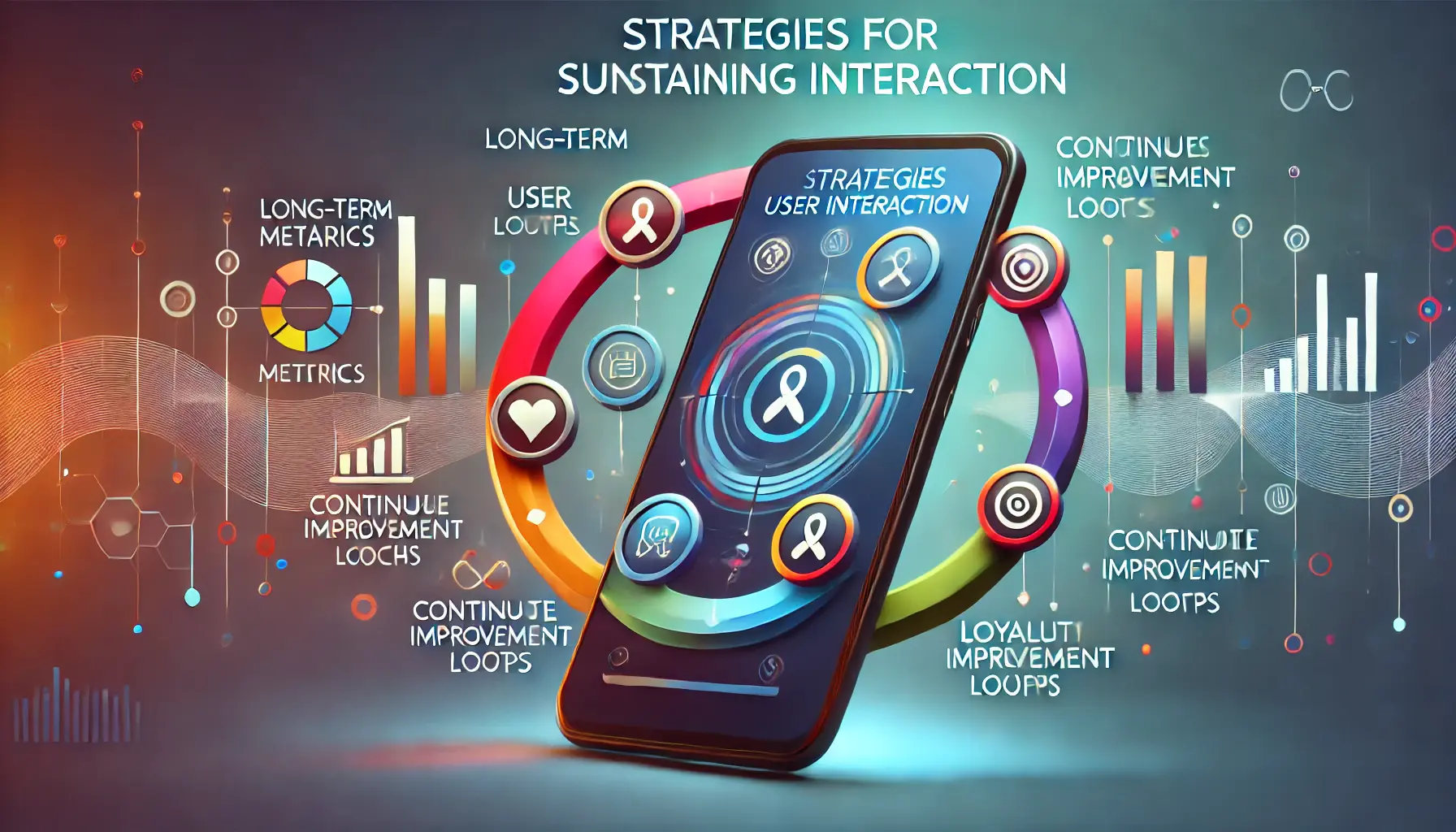
Illustration of strategies for sustaining user interaction, highlighting the importance of maintaining long-term user engagement.
Strategies for Sustaining User Interaction
To ensure long-lasting interaction and guide users towards repeat engagement, you need to adopt a variety of ASO strategies:
- Perfect onboarding: A carefully curated onboarding experience can establish a strong connection with users by helping them understand how your app’s functionalities and benefits work.
- Dynamic In-App Features: Use features like gamification, personalized content, and push notifications to encourage new sign-ups and keep existing users returning.
- Seasonal Promotions & Regular Updates: Continuous updates and seasonal promotions keep your app fresh, offering users new reasons to engage regularly.
- Customer Feedback Integration: Listening to and quickly responding to customer feedback not only improves the overall user experience but also deepens engagement between your app and its users.

Illustration of the role of data in enhancing user interaction, highlighting the importance of leveraging analytics to improve user engagement.
The Role of Data in Enhancing User Interaction
Without a doubt, data-driven decisions are at the core of a successful ASO strategy.
Monitoring user interaction through various tools allows you to understand user behavior within your app.
This data helps you streamline features, optimize your app store presence, and quantitatively improve the user experience.
- Regularly analyze user interaction data to identify trends and areas for improvement.
- Integrate insights from user behavior into your decision-making process when updating features or making changes.
- Keep testing and iterating your ASO strategies to ensure your app remains relevant and engaging for users.

Illustration of continuous optimization for long-term success, highlighting the importance of ongoing improvement in achieving lasting success.
Looking Forward: Continuous Optimization for Long-Term Success
Optimization is an ongoing process that requires multiple iterations—user interaction cannot be perfected in one go.
Your ASO strategy should evolve as user preferences and market trends change.
Being proactive and responsive to these changes will help keep your app engaging both now and in the future.
To sum up, maximizing user interaction through ASO requires a mix of strategic foresight, data-driven decisions, and continuous efforts to refine your approach.
By integrating all these elements into your process, you can build an engaging, dynamic app that resonates with users in a marketplace crowded with millions of apps.
Consistent user interaction is the result of strategic ASO techniques, ongoing observation, and adaptation. This is key to ensuring your app retains and engages users effectively.
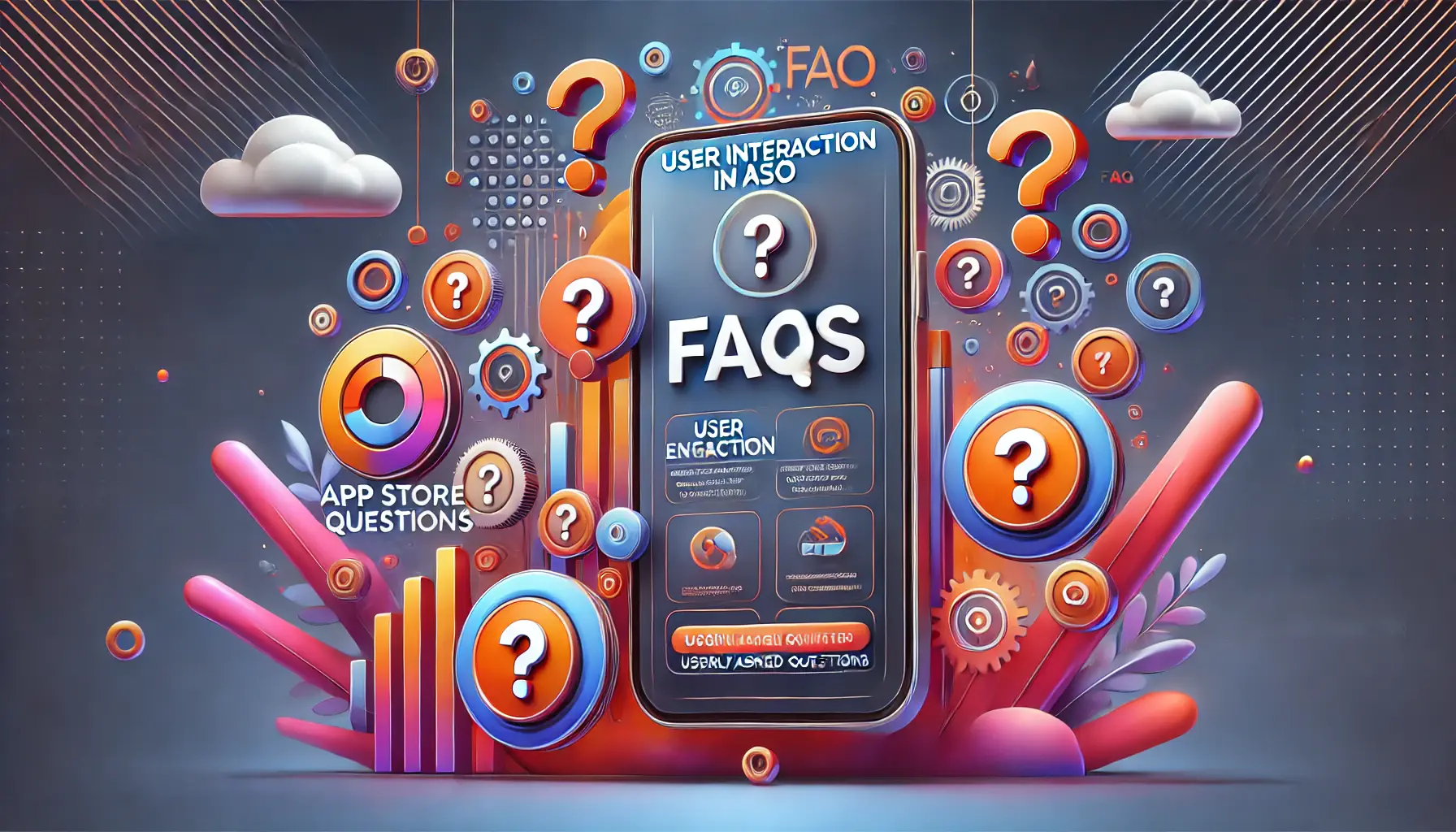
Illustration of user interaction in ASO – FAQs, highlighting the importance of addressing common questions related to App Store Optimization and user engagement.
Boost your mobile app's success with our guaranteed App Store Optimization (ASO) service. Leave it to the experts!
User Interaction in ASO – FAQs
This set of questions regarding user interaction and ASO implementation will help your apps perform better.
After the user has downloaded your app, their activities within it impact your app’s ranking and visibility.
This interaction is crucial for ASO as it directly influences how well your app performs in the store.
User interaction matters because it affects the ranking, retention, and visibility of your app.
Engaged users are more likely to write positive reviews and refer others, boosting overall app success.
Enhance user interaction by creating seamless onboarding, building interactive in-app features, regularly updating your app, and listening to user feedback.
Data-driven decisions based on user behavior are key to improving interaction.
Data provides insights into user behavior, allowing you to identify trends and determine what features work best.
By analyzing interaction data, you can refine ASO strategies and maintain high engagement levels.












